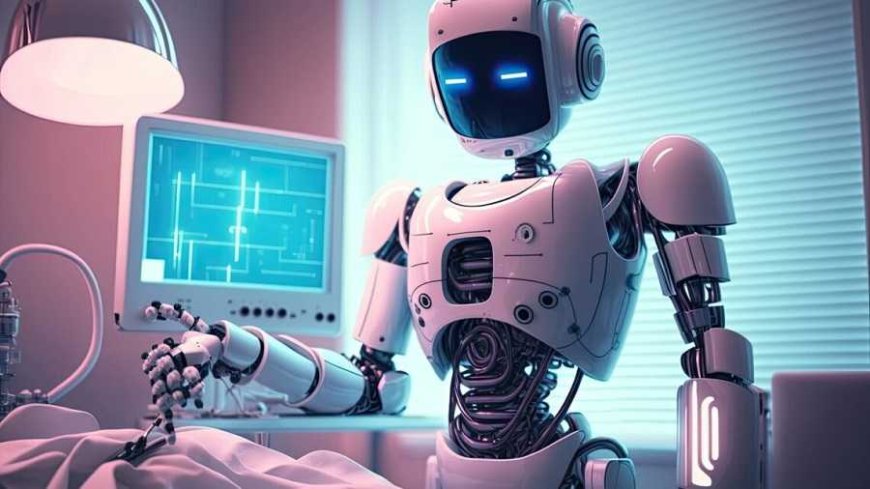The Rise of Medical Robots: Transforming Healthcare as We Know It
In recent years, a remarkable evolution has been underway within the field of healthcare, one that blurs the line between science fiction

In recent years, a remarkable evolution has been underway within the field of healthcare, one that blurs the line between science fiction and reality. The rise of medical robots, once confined to the realm of imagination, has now become an integral part of modern medicine, revolutionizing the way we diagnose, treat, and manage various medical conditions. From precision surgeries to intricate diagnostics, these advanced machines are reshaping the landscape of healthcare in ways that were once unimaginable.
The Genesis of Medical Robots: A New Era Begins
The concept of using robots in medicine can be traced back to the mid-20th century, when telemanipulators were developed to assist in delicate surgical procedures. However, it wasn't until the last few decades that advancements in robotics, artificial intelligence, and materials science converged to bring medical robots into the limelight.
Surgical Precision and Beyond
One of the most prominent applications of medical robots lies in the realm of surgery. Surgical robots, such as the da Vinci Surgical System, have transformed the way surgeries are conducted. These robots provide surgeons with enhanced dexterity, improved visualization, and the ability to perform minimally invasive procedures with unparalleled precision. By translating a surgeon's movements into smaller, more controlled actions, these robots mitigate the risks associated with traditional open surgeries, leading to quicker recovery times, reduced artical-operative pain, and shorter hospital stays.
Beyond the Operating Room: Diagnostic Advancements
While surgical robots are a remarkable feat, medical robots are also making significant strides in the field of diagnostics. Robotic systems equipped with advanced imaging technology are capable of providing detailed insights into a patient's condition, aiding in early detection and accurate diagnosis. For instance, robots can navigate through intricate pathways within the human body, capturing high-resolution images that assist medical professionals in identifying anomalies that might otherwise go unnoticed.
Personalized Patient Care and Rehabilitation
Medical robots are not limited to invasive procedures and diagnostics. They are also playing a crucial role in personalized patient care and rehabilitation. Robotic exoskeletons, for instance, are being used to help patients regain mobility after severe injuries or strokes. These wearable devices assist individuals in relearning motor skills by providing targeted support and feedback, thereby accelerating the recovery process and enhancing the quality of life for patients.
Navigating Challenges and Ethical Considerations
As with any technological advancement, the rise of medical robots is not without its challenges. Ethical concerns surrounding the use of robots in healthcare have sparked debates about the potential loss of the human touch in patient-doctor interactions. Striking a balance between the precision of robots and the empathetic care provided by human medical professionals remains a topic of exploration.
The Future: Collaboration and Integration
Looking ahead, the future of medical robots lies in their seamless integration with healthcare practices. Collaborative robots, often referred to as "cobots," are designed to work alongside human professionals, enhancing their capabilities rather than replacing them. These robots can assist in routine tasks, such as transporting medical supplies or monitoring patients' vital signs, allowing healthcare providers to focus their expertise on complex decision-making and patient interactions.
Empowering Healthcare Professionals
Contrary to fears of job displacement, medical robots are poised to empower healthcare professionals and elevate the standard of care. By delegating routine tasks to robots, doctors and nurses can allocate more time to building meaningful connections with patients, developing tailored treatment plans, and engaging in continuous learning to stay updated with the latest medical advancements.
The Road Ahead: Innovations and Possibilities
The rapid pace of innovation in the field of medical robots continues to open up new possibilities for the future. Nanorobots, for instance, hold the potential to deliver targeted treatments at the cellular level, revolutionizing drug delivery and disease management. Additionally, advancements in AI-driven diagnostics could lead to faster and more accurate identification of medical conditions, enabling proactive interventions and improved patient outcomes.
The rise of medical robots marks a pivotal moment in the history of healthcare. These remarkable machines are ushering in a new era of precision, efficiency, and personalized patient care. While challenges and ethical considerations remain, the overarching trajectory points towards a collaborative partnership between humans and robots, where each complemeMedTech Revolution, Robotics in Healthcare, Future of Medicine, Surgical Innovation™s the strengths of the other.
As we stand on the cusp of transformative change, the true impact of medical robots on the healthcare landscape is yet to be fully realized, but the potential to save lives and improve the quality of care is undeniably immense.
